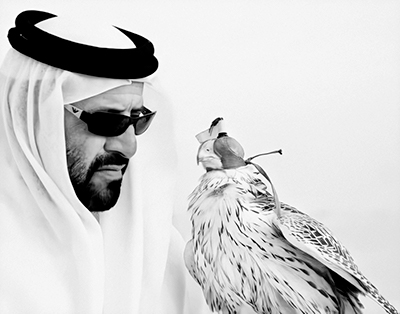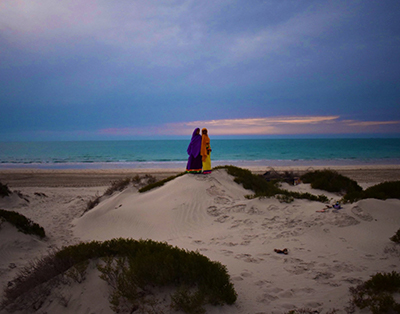Course Design
“Learning is a process that leads to change, which occurs as a result of experience and increases the potential for improved performance and future learning.” (Ambrose et al, How Learning Works, Jossey-Bass 2010)
Learning includes three components:
- “Learning is a process, not a product. However, because this process takes place in the mind, we can only infer that it has occurred from students’ products and performances.
- Learning involves change in knowledge, beliefs, behaviors, or attitudes. This change unfolds over time; it is not fleeting but rather has a lasting impact on how students think and act.
- Learning is not something done to students, but rather something students themselves do. It is the direct result of how students interpret and respond to their experiences – conscious and unconscious, past and present.”
Source: Ambrose et al, How Learning Works, Jossey-Bass 2010, p.3
Course Design
Backwards course design is a planning framework that enables the faculty member to hone in on overall learning objectives. Course design involves starting from what we want our students to know and be able to do at the end of a semester. The intended learning outcomes guide the process of course design. They include measurable statements of what students should know at the end of the course. These objectives are then the road map for the syllabus, whereby learning objectives are aligned with assignments and course content, considering how the course fits into the relevant program(s), and the rigor of the course relative to the preparation of the students enrolled. Strong course organization that will enhance teaching and student learning.
The curricular structure developed in your syllabus is something that needs to be put into action through deliberate pedagogy, methods of teaching, and the integration of technology where appropriate. This is as important for interdisciplinary electives as it is for structured prerequisite courses that have threshold concepts that must be learned to advance in a given program.
Curricular Alignment
Curricular alignment involves setting clear learning objectives, designing assessments that help develop and measure performance relative to those objectives, and deploying innovative teaching methods that allow students to practice and demonstrate new ways of thinking and doing.
If you are teaching in the Core Curriculum there are guidelines for proposing and developing a Core course and sample syllabus templates available.
If you are teaching a regular NYU Abu Dhabi course there is a syllabus creation tool and syllabus checklist available to assist faculty in compiling their syllabus.
Not everything that happens in the classroom should be measurable. And our liberal arts model grounds itself on the value of living an examined life, in knowing for knowing’s sake. Nonetheless, delivering quality education means setting out with a clear organization that students can follow. We assess what we teach, and we provide details of the journey so students know how to proceed.
How to Create Curricular Alignment
Curricular alignment ensures that a course fulfills its learning objectives; it connects course content and assessment tools to desired learning outcomes, creating a cohesive learning experience that supports students in achieving their educational goals. By implementing curricular alignment strategies, educators can design courses that support student learning and improve the overall quality of their teaching. This video presents effective ways to create curricular alignment within a course, from defining clear learning objectives to creating relevant assessments.
Abu Dhabi as a Learning Ground
NYU Abu Dhabi’s founding mission encapsulates a conviction that “interaction with new ideas and people who are different is valuable and necessary,” as well as a commitment to “educating students who are true citizens of the world.” From its conception, NYUAD has dedicated itself to “be an institution in and of Abu Dhabi, a leading global city that is open and dynamic, economically and culturally vibrant, and a magnet for diverse and creative people from across the UAE and around the world.”
As the capital of the country, the city not only has rich and authentic cultural roots but a burgeoning diverse environment and modern wonders that compliment its heritage beautifully. This makes for a dynamic setting within which the city can serve both as the medium and the material for authentic cross-disciplinary liberal arts learning.
Authentic learning refers to a wide variety of educational and instructional techniques focused on connecting what students are taught in school to real-world issues, problems, and applications.
Authentic Learning
As an active teaching methodology that equips students with the agency to engage in learning by doing, experiential and authentic learning is a cornerstone of liberal arts pedagogy. Drawing on the rich scientific, cultural, and environmental resources in Abu Dhabi, faculty at NYUAD can develop authentic assignments that leverage the geographic location of our community. Moreover, the dynamic nature of these resources enables them to be accessed even when we are geographically dispersed during remote instruction.
Field Trips and Experiential Opportunities Abound in Abu Dhabi
By exploring local museums, mosques, finance centers, and research labs, faculty can engage students authentically, and equip them with the skills to collaborate, think critically, and apply real-world scenarios to challenges. Case studies can be based on present or historic events and institutions in the city. The rich ecology of the Gulf region and vast desert ecosystems also offer opportunities for engaging scaffolded learning.
Authentic Learning
Authentic Learning is a pedagogical approach that encourages students to connect their knowledge and skills to real-world situations. The real-life significance of classroom concepts can help generate student interest while also enabling students to develop practical skills. This video features some ideas on how you can facilitate Authentic Learning in your course using Abu Dhabi as a learning ground.
Below are some examples of physical locations, research centers, and other elements of Abu Dhabi and the United Arab Emirates that can help bring your learning objectives to life for your students. Many of these locations can be visited virtually from anywhere.
And there is so much more!
COURSE SPOTLIGHT
Sohail Karmani taught Ethics of the Image in Spring 2020
Professor Karmani uses the backdrop of Abu Dhabi to help his students explore how the photographer’s choices impact seemingly objective images. Students address the question: “What ethical questions emerge from the tension between the medium’s supposed objectivity and the photographer’s admitted subjectivity?”
Professor Karmani used the streets, people, boats and buildings of Abu Dhabi as a means for students to explore ethical scenarios of photojournalism, travel photography, street photography, portraiture, and commercial photography. Through these authentic experiences, students confront questions about consent, privacy, representation, citizen responsibility, and propaganda.

El Sqara
Student Bakheeta Alketbi submitted this photo as part of her final assignment for the course.

Vibrant jellabiyas of women at the beach
Student Safiyah Al Tayer submitted this photo as part of her final assignment for the course.
Additional Resources
- Considerations for Course Design and Development
- NYU Best Practices for Course Design and Instruction
Content Resources
- MIT Open Courseware
- Smithsonian for Educators
- Council on Foreign Relations for Educators
- American Economic Association for Educators
- Teaching the Middle East: Lesson Plans & Guiding Questions
- BBC Languages
- Sharjah Art Foundation Podcasts provides a series of podcasts about classical Arabic music
- Al Arabiya Podcasts